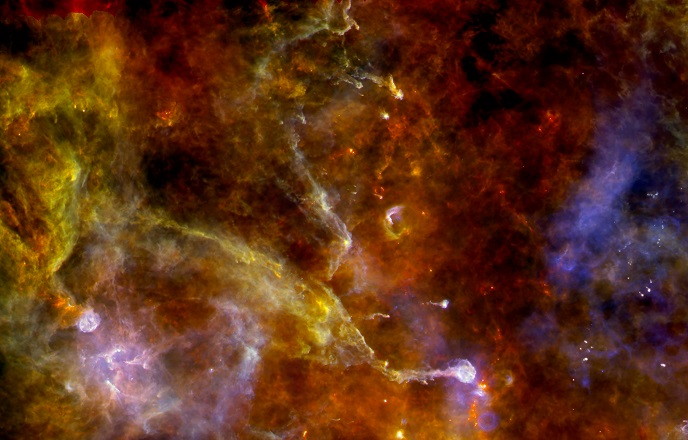Understanding the formation and evolution of massive stars
The question of how stars are formed, particularly those stars that are much more massive than the Sun, is one that continues to intrigue astronomers and physicists alike. Although researchers know that their origins lie within giant complexes of astronomical dust and molecular gas, this material blocks their view and prevents them from getting a good look at the newly formed star itself. Instead, researchers can only view young stars via the infrared radiation that is re-emitted by the surrounding dust. To help researchers ‘see’ through this material, the European Space Agency (ESA) launched two satellite missions: Herschel, which traces a new star’s infrared embedded phase, and Gaia, which traces the more evolved and visible phase. By combining the data gathered by these two missions, the EU-funded StarFormMapper project aims to get a complete picture of massive star and star cluster formation. “This project wanted to know whether these two missions could be combined to study the crucial evolutionary stage when the stars have formed but have not yet fully emerged as visible objects,” says Dr Stuart Lumsden, project coordinator. “Doing so would help address questions of how massive stars form, how these associations and clusters evolve, and whether the later visible stage still contains an imprint of how things started or whether this information is wiped out during early evolution.” The challenges of collaboration Extracting the full scientific value of the combined data required new, automated statistical techniques and common user tools. This was achieved via a collaboration between Quasar Science Resources, a software SME, and a group of academics led by the University of Leeds. Whereas Quasar created the infrastructure, the academic group developed the scientific techniques. While Quasar has been very successful at creating a potential software programme to link directly to the ESA’s archive where the Gaia and Herschel data are stored, getting to that point wasn’t always easy. According to Dr Lumsden, the different methods used by developers and academia often made collaboration a challenge: “This has been a real eye-opener, since some of our academic colleagues struggle to see beyond the typical outputs of papers, conferences, etc. to creating items of community-wide value,” he explains. “I’m impressed by the willingness of the SME to engage, and I hope we’ve learned some things that could help similar efforts in the future prosper a bit more readily.” Galactic evolution Although the project continues to be a work-in-progress, several important results have already been achieved. For example, during testing, the new software techniques have shown promise in their ability to address the specific scientific questions regarding star formation that the project set out to answer. Researchers also started developing creative methods for sharing the project’s insights into star formation with schools and communities. “Once the project is complete in May 2020, our scientific results will underpin the study of how galaxies evolve,” adds Dr Lumsden. “This is fascinating information that we look forward to sharing not only with the scientific community, but also with the general public – as keeping them engaged is essential to the ongoing success of publicly funded research like ours.”
Keywords
StarFormMapper, European Space Agency, ESA, Herschel, Gaia, star formation



